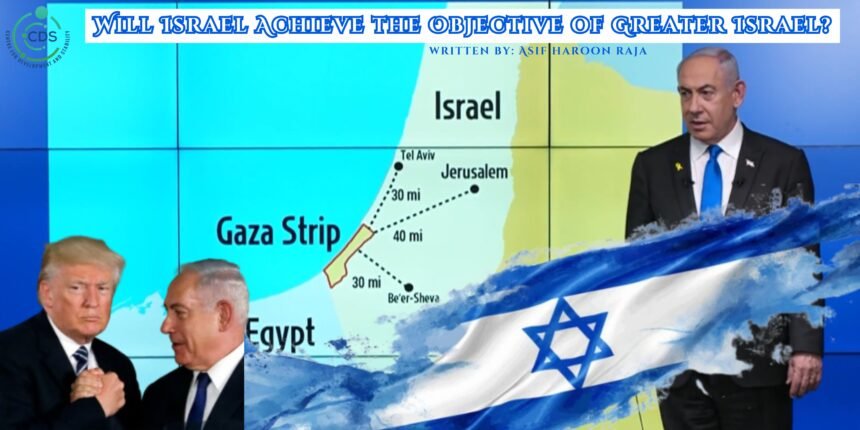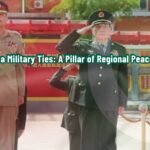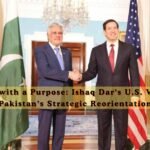America – The Guardian of Israel
The Middle East (ME) has remained engulfed in conflict since the Six-Day War of 1967. Any hope for peace in this volatile region remains elusive, largely due to the hegemonic ambitions of the United States and Israel. Far from being advocates of peace, both have acted as imperialist and war-mongering powers. The foreign policy of the United States, particularly concerning the ME, is heavily influenced—if not dictated—by the powerful Jewish lobby in Washington.
- America – The Guardian of Israel
- Strategic Objectives of the US, Israel, India
- Destabilization of Muslim States
- Erosion of Resistance and the Abraham Accords
- Breaking Iran’s Defensive Arc
- Commercial and Strategic Interests in Gaza
- Systematic Isolation of Iran
- Ceasefire Breached and Gaza Reinvaded
- Muted Response from the Arab League
- Direct Assault on Iran
- US Joins the War
- Frustrated Ambitions and Tactical Failures
- Humanitarian Crisis and Atrocities in Gaza
- Shattering the Myths
- Unanswered Questions and Looming Threats
- The author, Brigadier (Retd) Asif Haroon Raja is a war veteran, defence and political analyst, international columnist, and author of five books. He serves as Chairman of Thinkers Forum Pakistan and Patron-in-Chief of CDS Think Tank. He is a regular speaker at national and international seminars and frequently appears on TV talk shows.
- *The views and opinions expressed herein, and any references, are those of the author and do not necessarily reflect the editorial policy of the Centre for Development and Stability (CDS).
Following the creation of Israel by the British in 1948, the US assumed the role of its principal protector and patron. It has since worked tirelessly to make Israel the dominant military power in the ME.
Strategic Objectives of the US, Israel, India
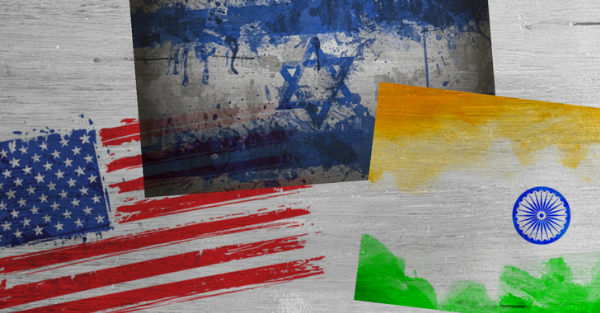
The US, having emerged as the sole superpower after dismantling the Soviet Union in 1991, has sought to retain its global hegemony by containing resurgent Russia and rising China.
Concurrently, Israel is aggressively pursuing the establishment of a “Greater Israel”—a Zionist vision stretching from the Nile in Egypt to the Euphrates in Iraq.
Another strategic partner of the duo, India, aspires for Akhand Bharat. Pakistan stands as the only stumbling bloc in the way of India’s aspirations; it has waged wars and conflicts to undo Pakistan.
To achieve its objective, Israel has aimed to dismantle militarily or economically strong Muslim states in the region. Its first major success came during the 1967 war when it defeated a coalition of Arab armies and annexed the Golan Heights, West Bank, Gaza, and Sinai Peninsula.
Destabilization of Muslim States
Israel made significant inroads during the Obama administration. The 2011 Arab Spring—engineered through CIA and Mossad initiatives—targeted a pre-planned list of Muslim states, including Iraq, Syria, Libya, Sudan, Yemen, Somalia, and Lebanon. Iran was to be tackled later, followed ultimately by nuclear-armed Pakistan.
Under the pretext of spreading freedom and democracy, Western forces painted local rulers as tyrants and intervened militarily. Iraq was invaded in 2003; regime changes were orchestrated in Ethiopia and Egypt in 2011; and Libya and Syria were thrown into prolonged civil wars. NATO’s intervention in Libya led to Qaddafi’s assassination and the division of the country into rival factions.
In Syria, groups like Al-Qaeda, the Nusra Front, Free Syrian Army, and ISIS received backing from the US, Turkey, and Gulf States to unseat President Bashar al-Assad. His survival hinged on Russian military intervention in 2015.
Sudan was divided in 2011, and internal conflict still plagues both Sudan and South Sudan. The US and its NATO allies acted as the military enforcers, while Israel remained a strategic observer, reaping the benefits of the regional chaos.
Erosion of Resistance and the Abraham Accords

By the time the so-called “War on Terror” formally ended in 2021, Israel had achieved many of its objectives. The Abraham Accords of 2020 brought Gulf Arab States into alignment with Israeli interests. Egypt and Jordan had already been pacified through peace treaties. Only Iran remained as a serious obstacle in the path to Greater Israel—with Pakistan still seen as a long-term strategic threat.
Breaking Iran’s Defensive Arc
To neutralize Iran, Israel needed to dismantle its regional alliances and proxy forces. Hezbollah in Lebanon, Hamas in Gaza, the IRGC presence in Syria, and the Houthis in Yemen—all forming Iran’s strategic depth—were systematically targeted.
Commercial and Strategic Interests in Gaza
The coastal waters off Gaza are rich in hydrocarbons, making the region commercially valuable. Israel and its Western allies have plans to construct a canal parallel to the Suez Canal, connecting the Mediterranean with Gaza, along with an India-Europe trade corridor running through the region.
Systematic Isolation of Iran

Armed with overwhelming financial and military support from the US, UK, Germany, and France, Israel launched a genocidal war against Gaza beginning in October 2023. With Hamas under siege, efforts extended to weaken Hezbollah in Lebanon and IRGC-aligned militias in Syria. This collective pressure eroded Iran’s regional deterrence.
By December 2024, the Assad regime in Syria was overthrown through a Western-backed insurgency led by Al-Qaeda affiliate Al-Sharaa Ahmed. Israeli Defence Forces (IDF) quickly expanded operations into southern Syria, competing with Turkey for influence, while violent clashes broke out in Sweida Province between Druze factions and Islamist groups.
Ceasefire Breached and Gaza Reinvaded
Israel violated a three-phase ceasefire agreement in November 2024 and resumed its onslaught in Gaza. With support from the Trump administration, the aim was ethnic cleansing—displacing 2.3 million Palestinians and annexing the West Bank outright.
Muted Response from the Arab League
Arab governments, including the GCC states, have largely turned a blind eye to Israel’s aggression, prioritizing regime survival. They fail to grasp that the vision of Greater Israel extends beyond Palestine into parts of Egypt, Saudi Arabia, Jordan, Syria, and Iraq.
Direct Assault on Iran
Emboldened by its gains, Israel moved to confront Iran head-on. On 13 June 2025, following a year of covert Mossad operations within Iran, targeted strikes eliminated key IRGC officers, political leaders, and nuclear scientists. The Israeli Air Force then launched a series of aerial raids that devastated major Iranian cities.
Iran’s air defences were restored within 18 hours, allowing for retaliatory missile strikes. Iran’s hypersonic and ballistic missiles pierced through the Iron Dome and US-deployed THAAD systems, hitting strategic military targets in northern and central Israel.
US Joins the War
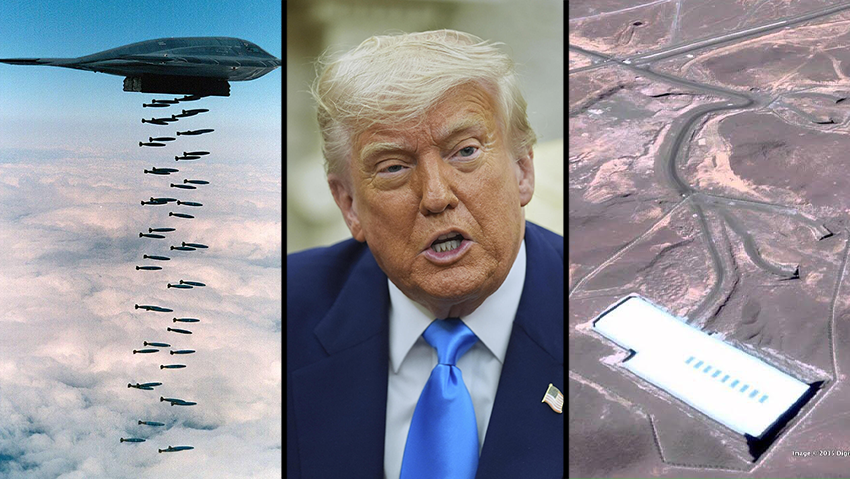
At Netanyahu’s request, US B-52 bombers attacked Iran’s nuclear facilities at Natanz, Fordow, and Isfahan. The US claimed these sites were destroyed, but Iran insisted the damage was superficial, with its enriched uranium already moved to safety.
Iran counterattacked US bases in Iraq and Qatar, though these strikes caused minimal damage due to prior evacuation. Iran has since announced the resumption of its nuclear enrichment program, reportedly with Russian support. Both Russia and China have pledged to modernize Iran’s air force.
Frustrated Ambitions and Tactical Failures
Despite over a year and nine months of brutal warfare in Gaza, Israel has failed to achieve its objectives:
- Hamas remains operational despite severe leadership losses.
- Israeli hostages remain in captivity.
- The Palestinian population has not been broken nor displaced.
- Iran’s missile retaliation inflicted significant damage on Israel’s military infrastructure.
- US B-52 bombers failed to destroy Iran’s underground nuclear sites.
Humanitarian Crisis and Atrocities in Gaza

Over 60,000 Palestinians—mostly women and children—have been killed. The remaining population suffers from famine, disease, and total collapse of healthcare. Israeli snipers have been documented shooting civilians lured to food distribution centers. Makeshift camps now house the malnourished survivors, yet essential supplies remain blocked.
Trump’s proposal to relocate Gazans to enable reconstruction and commercial tourism in Gaza has been widely condemned.
Shattering the Myths
The Gaza war shattered the myth of Israeli military invincibility. Hamas’s resilience and Iran’s effective retaliation revealed the vulnerabilities of the IDF and Israel’s air defences.
The US-Israel-India axis suffered a setback following India’s humiliating defeat in a four-day conflict in which Israel was a partner. It raised the stature of Pakistan and lowered India’s stature.
India’s self-created notion of being the strongest conventional military power and technologically most superior in South Asia were also blown apart.
Unanswered Questions and Looming Threats
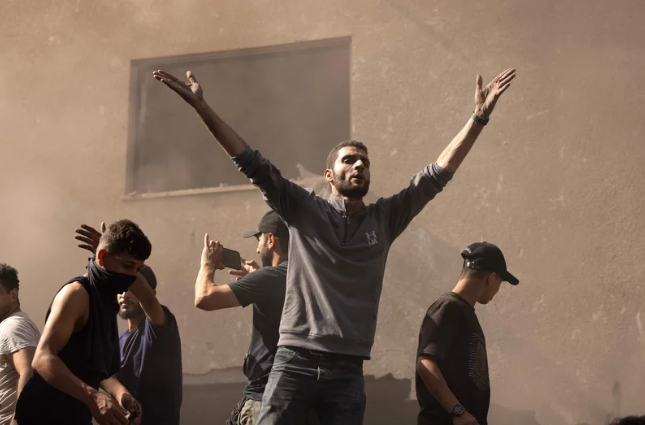
The second half of 2025 remains uncertain:
- Will Gazans be expelled, and if so, to where?
- If Palestinians resist displacement, will genocide continue unchecked?
- Will Israel turn Gaza and the West Bank into military colonies?
- Will a two-state solution ever materialize?
- Will the Arab League continue its passive stance as Israel expands?
- Could Iran’s confrontation with the US escalate into full-scale war?
- Will Russia and China intervene more assertively in the ME?
- Is Pakistan the next target on the US-Israel-India radar?
- Will India launch another war against Pakistan, or confine itself to proxy war?
- Will the USA prefer Pakistan over India under the changed global scenario, and will Pakistan be able to adopt a balanced approach to keep all content, and draw benefits from the US, China and Russia?
- Will Iran distance itself from India and veer towards Pakistan?
- Could the Middle East or South Asia ignite World War III?
- Will the US-Israel-India axis overcome internal turmoil and pursue peace, or will the Global South, led by China and Russia, reshape the world order?
These questions arise from the reckless unpredictability of leaders like Trump, Netanyahu, and Modi—who seem committed to war rather than peace.

